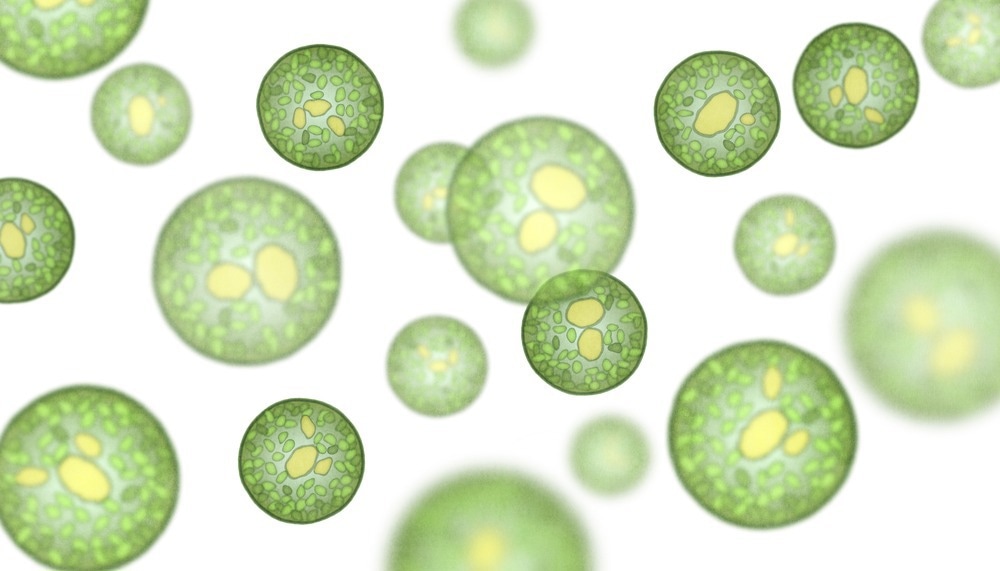 By Surbhi JainReviewed by Susha Cheriyedath, M.Sc.Aug 31 2022
By Surbhi JainReviewed by Susha Cheriyedath, M.Sc.Aug 31 2022In an article recently published in the journal Scientific Reports, researchers discussed the bioremediation of Nb-MXene using green microalgae.

Study: Understanding the mechanism of Nb-MXene bioremediation with green microalgae. Image Credit: Perception7/Shutterstock.com
Significance of Nanomaterials
Since their discovery, nanomaterials have drawn a lot of attention. Unfortunately, the incorporation of nanoparticles into practical applications could lead to unintentional spills brought on by improper disposal, careless management, or a lack of adequate safety infrastructure.
Microalgae Cells for Bioremediation
Microalgae cells show promise for developing green methods to clean organic contaminants in water since they multiply swiftly and react quickly to the presence of various substances.
Scientists and engineers worldwide are interested in environmentally friendly ways to degrade organic contaminants and remove heavy metal ions. However, inorganic crystalline contaminants have a low water solubility and little susceptibility to different biotransformations, making bioremediation techniques challenging.
Finding environmentally friendly ways to clean up nanoparticles is a difficult and untapped field. Due to the high uncertainty around the effects of 2D nanomaterials' biotransformations, there are currently no simple methods for illuminating their potential disintegration pathways during bioremediation processes.
Bioremediation of 2D Ceramic Nanomaterials using Microalgae Raphidocelis Subcapitata
In this study, the authors employed model inorganic 2D Nb-based MXenes with a simple shape parameters analysis technique to study the mechanism of the bioremediation of 2D ceramic nanomaterials with the green microalgae Raphidocelis subcapitata.
The team discovered that the physicochemical interactions at the surface of the Nb-based Mxenes caused microalgae to break them down.
Initial attachment of single and few-layered MXene nanoflakes to microalgal surfaces resulted in a moderate inhibition of algal growth. Over time, however, the microalgae oxidized the Mxene nanoflakes and further broke them down into NbO and Nb2O5. Following 72 hours of water treatment, further microalgal recovery was possible because these oxides, which were not poisonous to microalgal cells, ingested Nb-oxide nanoparticles through an absorption process.
The rounded form, enlarged size, and altered growth rates of the cells were all indicative of the nutritional benefits associated with uptake.
The team demonstrated the potential to track even subtle material shape modifications utilizing 2D nanomaterials as a model system. This study provided the foundation for future investigations on the environmental effects of inorganic crystalline nanomaterials and insight into the surface interaction-based processes that drive the mechanism of bioremediation of 2D nanomaterials.
The researchers used in situ monitoring of MXene as a representative of inorganic ceramic materials to follow the degradation process of green microalgae as an active agent for water bioremediation from inorganic ceramic materials.
The suggested theory stated that Nb-based MXenes were broken down by microalgae into harmless chemicals due to surface-related physicochemical interactions, allowing for further algal recovery.
The microalga Raphidocelis subcapitata was capable of the bioremediation of 2D nanomaterials like Nb-based MXenes. Using a niobium absorption mechanism, microalgae could convert hazardous Nb-MXenes into harmless NbO and Nb2O5 oxides, which also contribute to their nutrition.
Role of Raphidocelis Subcapitata in the Bioremediation of MXenes Based on Nb
Hydrofluoric acid (HF)-etching and delamination with tetrabutylammonium hydroxide (TBAOH) were utilized to produce single-layered 2D nanoflakes of Nb2CTx and Nb4C3Tx MXenes effectively. The microalga Raphidocelis Subcapitata served as reliable toxicity markers.
The result indicated that single-layer Nb-MXenes were not hazardous to the tested microalgae, either acutely or chronically. In their highest concentrations of 100 milligrams per liter, single-layer Nb-MXene nanoflakes only marginally inhibited microalgal development.
The degradation of Nb-based MXenes occurred due to physicochemical interactions between microalgae cells and MXene during the bioremediation process by microalgae. Nb-MXene nanoflakes initially appeared to adhere to the surface of the microalgae, significantly slowing their development.
Microalgae decomposed the Nb-MXenes over an extended period into harmless NbO and Nb2O5 oxides after first oxidizing them. Following 72 hours of water treatment, this stage allowed for continued recovery. These impacts also affected the shape parameters of 2D Nb-MXene nanoflakes and microalgae cells due to the nutritive and breakdown processes, respectively.
Conclusions and Future Perspectives
In conclusion, this study provided insight into the mechanisms connected to surface physicochemical interactions that are the basis for the bioremediation of 2D nanomaterials. A simple shape parameters-based method was developed for monitoring even subtle shape changes in 2D nanomaterials.
The authors mentioned that the current study advances knowledge of the interplay between material surfaces and living things. The findings of this study also lay the groundwork for future research on truly eco-friendly niobium mining.
The team acquired the results in a completely controlled model environment, necessitating extensive research carried out in a real-world setting. A simple method for following even minor material shape alterations using 2D MXene nanoparticles was created.
It was emphasized that the proposed approach provides data and a fundamental framework for examining diverse environmental consequences brought on by inorganic crystalline nanoparticles.
References
Jakubczak, M., et al. (2022). Understanding the mechanism of Nb-MXene bioremediation with green microalgae. Scientific Reports, 12 (14366). https://www.nature.com/articles/s41598-022-18154-3
Disclaimer: The views expressed here are those of the author expressed in their private capacity and do not necessarily represent the views of AZoM.com Limited T/A AZoNetwork the owner and operator of this website. This disclaimer forms part of the Terms and conditions of use of this website.